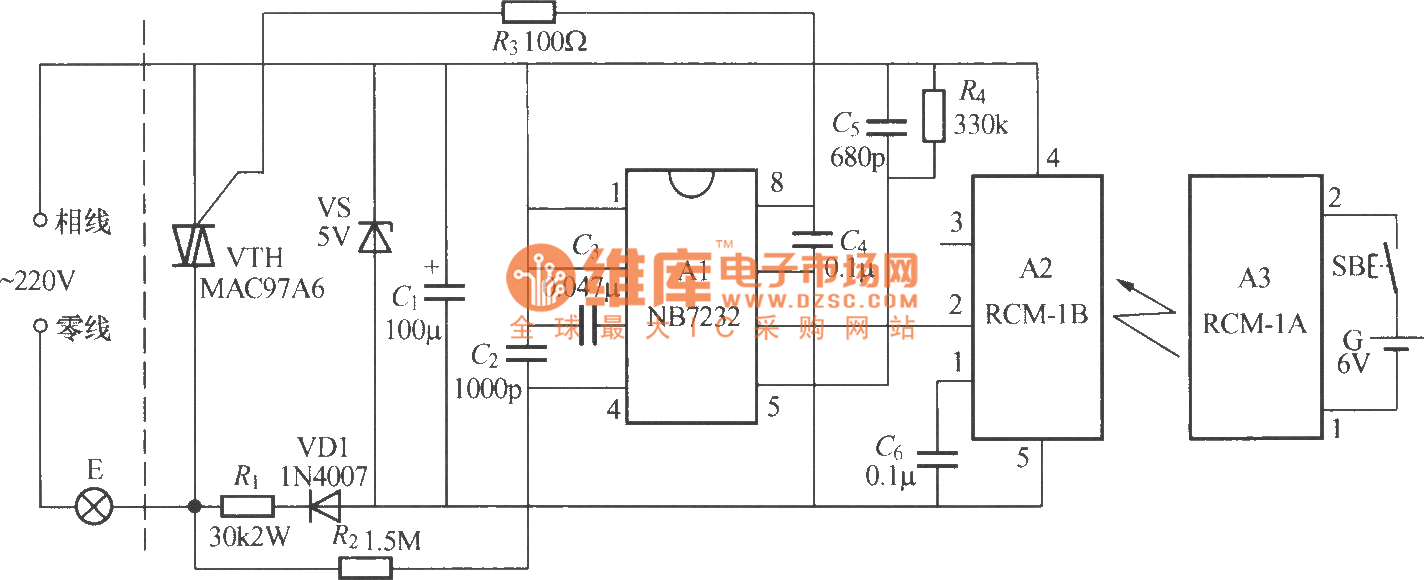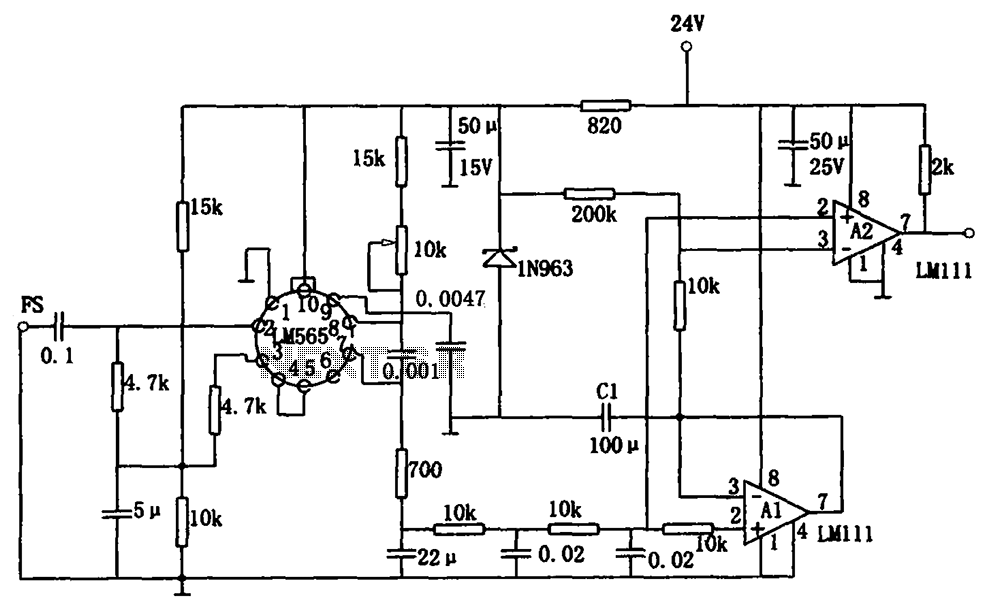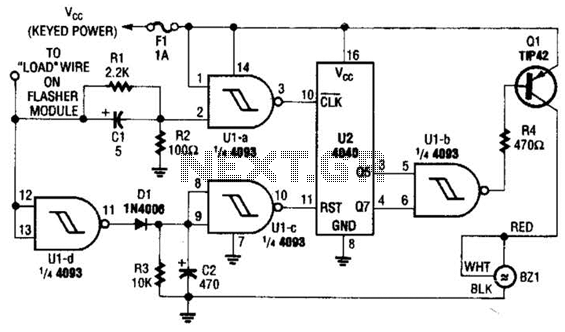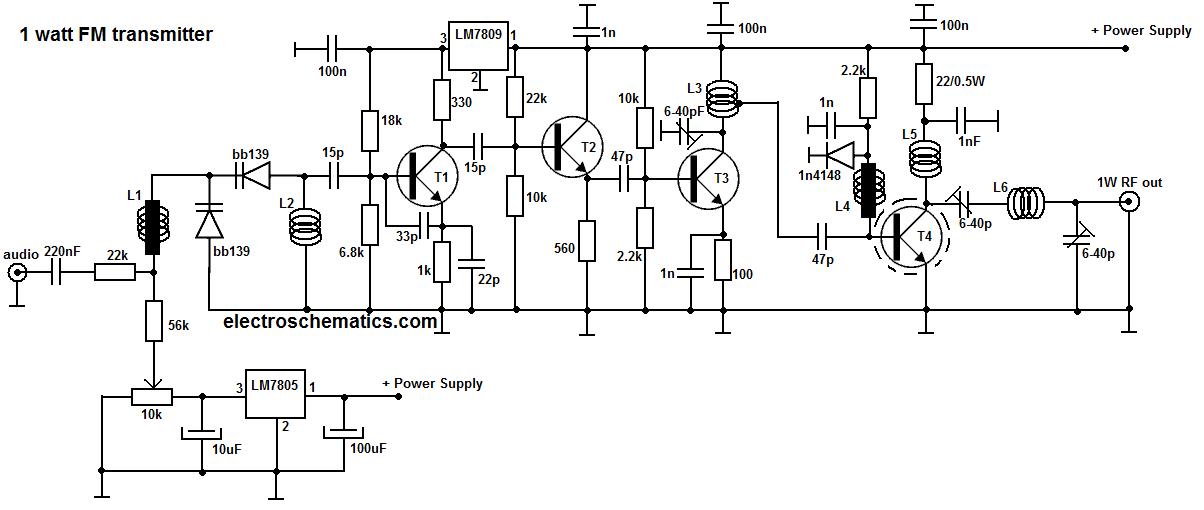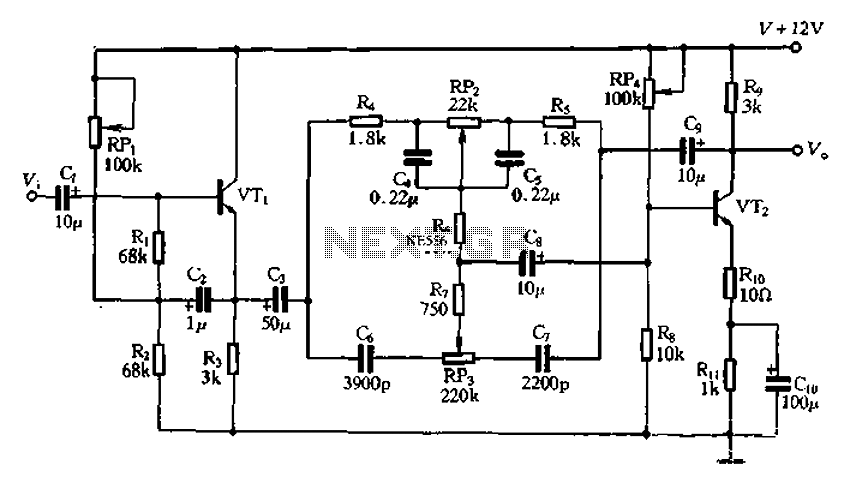
PLL FM Demodulator Circuit Module

This circuit is a Phase-Locked Loop (PLL) system designed for use as an FM demodulator. The output of the Voltage-Controlled Oscillator (VCO) follows the FM signal, with the input voltage to the VCO being proportional to its output frequency. Consequently, the input to the VCO corresponds to the demodulated signal. This circuit utilizes a phase comparator and a VCO. In this example, the FM signal is comprised of a 10-kHz carrier frequency modulated by a 400-Hz audio signal. The schematic diagram illustrates the connections of the CD4046B as an FM demodulator. The total amplitude of the FM signal is 500 mV, necessitating that the signal be AC-coupled to the signal input (terminal 14). Phase Comparator I is employed in this application because a PLL system with a center frequency matching the FM carrier frequency is required. Additionally, Phase Comparator I is advantageous due to its high signal input noise rejection characteristics.
The circuit functions effectively by utilizing the CD4046B integrated circuit, which incorporates both a VCO and phase comparators. The VCO generates a frequency that is controlled by the input voltage, allowing it to lock onto the frequency of the incoming FM signal. The phase comparator compares the phase of the VCO output with the phase of the incoming FM signal to maintain synchronization.
In this setup, the AC coupling at the input stage is crucial for filtering out any DC offset present in the incoming signal, ensuring that only the varying part of the signal is processed. This is particularly important in FM demodulation, where the information is encoded in the frequency variations of the carrier wave.
The choice of Phase Comparator I is significant as it offers better performance in terms of noise rejection, which is essential in demodulating FM signals where the signal-to-noise ratio can be critical. The PLL's ability to maintain a stable output frequency that corresponds to the modulated audio signal makes it highly effective for applications in radio communications and audio processing.
Overall, this PLL-based FM demodulator circuit provides a reliable means of extracting audio information from frequency-modulated signals, making it suitable for various electronic communication systems. The design ensures that the demodulated output is a faithful reproduction of the original audio signal, which is critical for clarity and quality in audio applications.This is a circuit about PLL system that can be used to implement an FM demodulator. Since the VCO output tracks the FM signal, and the VCO input voltage is proportional to the VCO output frequency, then the VCO input will be equal to the demodulated signal. This circuit is based on phase comparator and VCO. This is the figure of the circuit. For t his example, an FM signal consisting of a 10-kHz carrier frequency was modulated by a 400-Hz audio signal. The schematic diagram shows the connections of the CD4046B as an FM demodulator. The total FM signal amplitude is 500 mV, therefore, the signal must be ac coupled to the signal input (terminal 14).
Phase comparator I is used for this application because a PLL system with a center frequency equal to the FM carrier frequency is needed. Phase comparator I lends itself to this application also because of its high signal-input-noise-rejection characteristics.
🔗 External reference
The circuit functions effectively by utilizing the CD4046B integrated circuit, which incorporates both a VCO and phase comparators. The VCO generates a frequency that is controlled by the input voltage, allowing it to lock onto the frequency of the incoming FM signal. The phase comparator compares the phase of the VCO output with the phase of the incoming FM signal to maintain synchronization.
In this setup, the AC coupling at the input stage is crucial for filtering out any DC offset present in the incoming signal, ensuring that only the varying part of the signal is processed. This is particularly important in FM demodulation, where the information is encoded in the frequency variations of the carrier wave.
The choice of Phase Comparator I is significant as it offers better performance in terms of noise rejection, which is essential in demodulating FM signals where the signal-to-noise ratio can be critical. The PLL's ability to maintain a stable output frequency that corresponds to the modulated audio signal makes it highly effective for applications in radio communications and audio processing.
Overall, this PLL-based FM demodulator circuit provides a reliable means of extracting audio information from frequency-modulated signals, making it suitable for various electronic communication systems. The design ensures that the demodulated output is a faithful reproduction of the original audio signal, which is critical for clarity and quality in audio applications.This is a circuit about PLL system that can be used to implement an FM demodulator. Since the VCO output tracks the FM signal, and the VCO input voltage is proportional to the VCO output frequency, then the VCO input will be equal to the demodulated signal. This circuit is based on phase comparator and VCO. This is the figure of the circuit. For t his example, an FM signal consisting of a 10-kHz carrier frequency was modulated by a 400-Hz audio signal. The schematic diagram shows the connections of the CD4046B as an FM demodulator. The total FM signal amplitude is 500 mV, therefore, the signal must be ac coupled to the signal input (terminal 14).
Phase comparator I is used for this application because a PLL system with a center frequency equal to the FM carrier frequency is needed. Phase comparator I lends itself to this application also because of its high signal-input-noise-rejection characteristics.
🔗 External reference
Warning: include(partials/cookie-banner.php): Failed to open stream: Permission denied in /var/www/html/nextgr/view-circuit.php on line 713
Warning: include(): Failed opening 'partials/cookie-banner.php' for inclusion (include_path='.:/usr/share/php') in /var/www/html/nextgr/view-circuit.php on line 713
